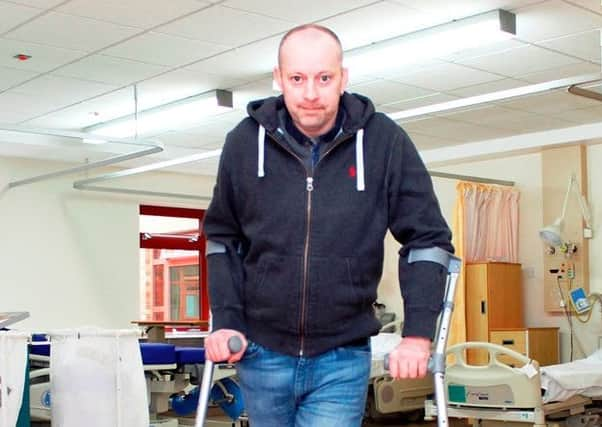Paralysed man walks again


Richard Fletcher, aged 39, of Chapeltown, was left paralysed after suffering a stroke more than eight years ago.
But after a life-changing functional electrical stimulation (FES) device, known as ActiGait, was inserted into Richard in October at the Northern General Hospital, he is back on his feet.
Advertisement
Hide AdAdvertisement
Hide AdRichard said: “For eight years I could barely walk, I would fall several times a day which meant I hardly left the house and my confidence was pretty low.
“I always thought that I would be stuck struggling to walk. But since having the device implanted I’ve seen lots of benefits.
“I haven’t fallen once, my confidence has rocketed and my walking speed has increased by over 50 per cent. I’m looking forward to the summer when I’m hoping to go out on a number of walks.”
After suffering the stroke, Richard was left without any movement or the ability to speak for more than two months.
Advertisement
Hide AdAdvertisement
Hide AdHe gradually regained his speech and some body movement but has been unable to walk properly since , due to a condition known as foot drop.
The condition is when the muscles in the foot are weakened or paralysed, causing the sufferer to drag their foot on the floor. Common causes include stroke, cerebral palsy and multiple sclerosis.
Fitting the device involved inserting a stimulator under Richard’s skin with an electrode being attached to his peroneal nerve.
Through a series of sensors and a monitoring system worn around the waist, the device stimulates the muscles at just the right time to enable lifting and movement of the foot.
Advertisement
Hide AdAdvertisement
Hide AdAs the electrode is attached directly to the peroneal nerve, it only stimulates the muscles required to move the foot.
With external FES devices a common problem is that the electrode is not as accurate and can cause the user to experience uncomfortable shock sensations and irritations.
Dr Kidangalil Mathew, consultant in spinal injuries and specialised rehabilitation, said: “The device has brought some great improvements to Richard’s quality of life and has the potential to do so for many others in a similar situation.
“Thanks to the great multidisciplinary team we have here as well as our commissioners we have become the first NHS centre to implant the ActiGait.”